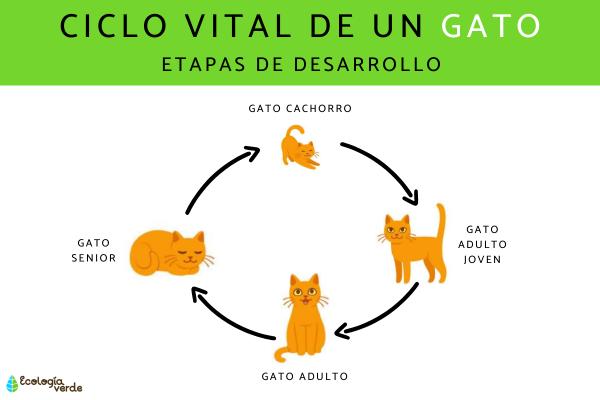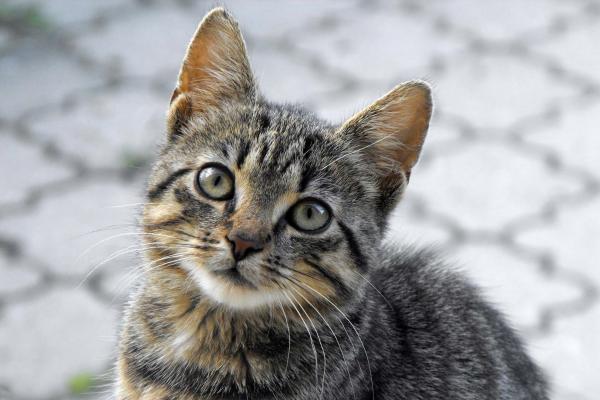Alongside dogs, cats are among the most popular pets worldwide. While many people think of cats as independent creatures that require little attention, the reality is that cats thrive when provided with the right environment, care, and interaction at every stage of their life.
In this article, we’ll explore the complete life cycle of a cat, from kittenhood to old age, and share essential tips on how to care for your feline companion throughout each phase.

A cat’s life can be divided into four key stages, each with its own physical, emotional, and behavioral milestones:
Kitten (0–6 months)
Young Adult (6 months–2 years)
Adult (2–10 years)
Senior (10+ years)
Let’s dive into the characteristics and care requirements for each of these stages.
A mother cat typically gives birth to 1–6 kittens, with 3–4 being the average.
Newborn kittens are blind, toothless, and completely dependent on their mother’s milk and care.
By around 1 week, kittens open their eyes (always blue at first), and their vision gradually sharpens.
Their sense of smell develops quickly, helping them orient themselves.
At around 3 weeks, kittens begin to play by chasing their mother’s tail or wrestling with littermates.
These games are crucial for motor skills, hunting behavior, and emotional development.
Kittens raised without littermates may become fearful or aggressive as adults due to poor socialization.
By 2 months, kittens can eat solid food; at 3 months, they are fully weaned.
This stage is ideal for:
Introducing them to nail trimming, brushing, and handling.
Training them to use a carrier for vet visits.
Helping them get used to other animals and people in the household.

Around 6 months, kittens reach sexual maturity.
They become more curious and may attempt to escape outdoors to explore their environment.
If not already done, now is the time to:
Establish feeding schedules.
Set clear areas for sleeping and using the litter box.
Continued positive interaction helps reinforce trust and reduce behavioral issues.
Female cats may experience their first heat as early as 6–8 months.
Heat lasts around 7 days and repeats every 10 days if mating doesn’t occur.
To avoid unwanted litters or behavioral changes, spaying/neutering is highly recommended.

By age 2–3, cats are considered fully grown adults.
Unneutered males and females may try to roam, mark territory with urine, or exhibit mating behaviors.
Sterilized cats are less likely to display these behaviors, but environmental factors can still influence their actions.
Brushing your cat regularly strengthens your bond and reduces shedding and hairball formation.
Use this time to check for skin issues, parasites, or signs of stress.
Adult cats need a structured environment:
Separate zones for eating, playing, and resting.
In multi-cat households, provide multiple litter boxes, food dishes, and resting areas to reduce competition.
If breeding, note that the gestation period for cats is 63–67 days.
Ensure a calm and safe space for the mother cat to give birth and nurse her kittens.

Increased sleeping and resting time is a common indicator of aging.
Vision and hearing may decline, and mobility might be affected.
Jumping or climbing may become more difficult.
Add ramps or stepping platforms to help senior cats reach their favorite spots without straining.
Make sure beds are warm, soft, and easily accessible.
Senior cats are more prone to chronic conditions like arthritis, kidney issues, or dental disease.
Regular vet checkups are essential.
Indoor cats generally live longer than outdoor or feral cats.
Fun fact: The longest-living cat on record, Creme Puff, lived to be 38 years and 3 days old!

Understanding the life cycle of a cat helps us become more mindful and responsible pet owners. Whether you’re caring for a playful kitten or a wise senior, every stage requires love, attention, and specific care practices.
By adjusting your approach as your cat grows, you’ll ensure a healthy, happy life for your feline friend—and build a bond that lasts a lifetime.
animal tags:
We created this article in conjunction with AI technology, then made sure it was fact-checked and edited by a Animals Top editor.